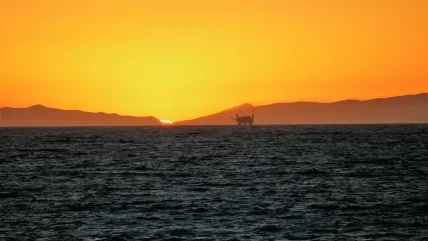
US President Joe Biden has announced a series of measures to permanently protect extensive areas of US waters from future oil and gas leasing. The new protections cover the entire US East Coast, the eastern Gulf of Mexico play aviator online game, the Pacific Coast off Washington, Oregon, and California, and additional sections of the Northern Bering Sea in Alaska. This action safeguards more than 625 million acres of ocean, reflecting a decision that the environmental and economic risks of drilling outweigh the limited fossil fuel resources available in these regions.
By implementing these withdrawals, President Biden aims to protect coastal communities, marine ecosystems, and local economies—including fishing, recreation, and tourism—against potential oil spills and the environmental impacts of offshore drilling.
Approximately 40% of Americans live in coastal areas reliant on a healthy ocean for economic and environmental sustainability. The administration’s decision ensures that these regions remain safeguarded from oil spills, which pose a significant threat to marine ecosystems and industries like tourism and fishing.
The move aligns with widespread opposition to offshore drilling expansion. Nearly 400 municipalities and over 2,300 elected officials at local, state, tribal, and federal levels have formally opposed such activities due to environmental, health, and economic concerns. Bipartisan governors from both coasts have similarly expressed reservations. In Alaska, over 70 coastal tribes have long advocated for protections in the Northern Bering Sea, emphasising the importance of the region’s resources for subsistence and cultural preservation.
President Biden utilised Section 12(a) of the Outer Continental Shelf Lands Act to issue two Presidential Memoranda, ensuring these protections are permanent and without expiration. Key areas withdrawn include:
- The Eastern U.S. Atlantic Coast and the Eastern Gulf of Mexico: Over 334 million acres from Canada to Florida are now protected. This includes areas previously covered by Congressional withdrawals under the Gulf of Mexico Energy Security Act of 2006. These protections bolster the multi-billion-dollar fishing and tourism industries in these states.
- The Pacific Coast: Nearly 250 million acres off California, Oregon, and Washington are now off-limits for oil and gas leasing. This region, home to rich marine biodiversity including seals, whales, and seabirds, has not seen federal leasing activity since 1984. State-level protections, such as California’s moratorium on new leases, further underscore the area’s environmental significance.
- The Northern Bering Sea in Alaska: An additional 44 million acres in the Northern Bering Sea Climate Resilience Area are now protected. This region supports one of the world’s largest marine mammal migrations and is vital to the food security and cultural heritage of Indigenous communities, including the Yup’ik, Cup’ik, and Inupiaq peoples.
With these actions, President Biden has now conserved more U.S. lands and waters than any other president in history, surpassing 670 million acres. This includes ten national monument designations, six new national wildlife refuges, and protections for iconic areas such as Chaco Canyon in New Mexico and the Boundary Waters in Minnesota.
The administration has also prioritised ocean conservation and climate resilience by establishing three new national marine sanctuaries, approving 19 gigawatts of offshore wind projects, and launching the first-ever US Ocean Climate Action Plan. These initiatives align with the America the Beautiful programme, which seeks to protect 30% of US lands and waters by 2030 through locally led efforts.
The decision builds on the administration’s broader climate agenda, aimed at reducing reliance on fossil fuels while protecting natural habitats and supporting vulnerable communities. By prioritising environmental stewardship and sustainable energy, the Biden-Harris Administration continues to advance policies that address the dual challenges of climate change and biodiversity loss.






